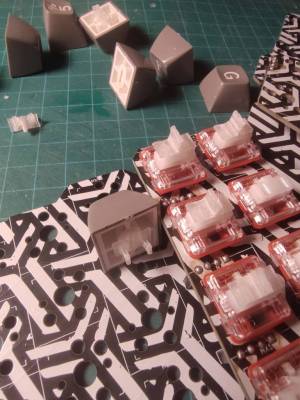
The result is a nice adapter that allows them to be used with Kailh chocs — you can find the file on Thingiverse, and check out the video after the break to see how they sound on a set of clicky white chocs.
Those white chocs are attached to a ThumbsUp! v8 keyboard, a line that [Sasha K.] designed. His daily driver boards are on v9 and v10, but the caps were getting jammed up because of the spacing on those. So instead, he used v8 which has Cherry MX spacing but also supports chocs.
As you can see, there is not much to the adapter, which essentially plugs the Selectric keycap’s slot and splits the force into the electrical outlet-style pair of holes that chocs bear This feels like an easier problem to solve than making an adapter for MX-style switches. What do you think?
Desk-Mounted Macro Pad Does Not Control Desk Height
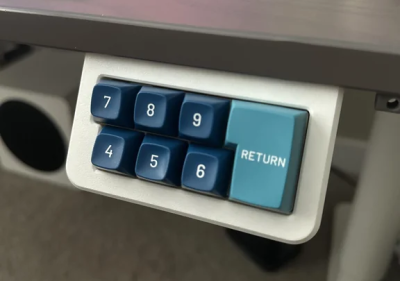
So why the number scheme? It means nothing more than that it is representative of the keycaps that [CloffWrangler] had lying around. They are currently used for volume control, toggling mic and webcam in Zoom, and some other stuff that [CloffWrangler] hasn’t landed on just yet.
This hand-wired, 3D-printed beauty is ruled by a Raspberry Pi Pico and contains Gateron Oil Kings switches. I sure would like to have something similar, but I think I would hit it with my chair quite a bit unless I put it way over there to the right or something. But then I wonder, would it be as useful? If it were at arm’s length, I might be tempted to rotate the thing 90° to the right so it wouldn’t be awkward to use.
The Centerfold: A Cat Person Lives Here

So, that’s not too many keys, is it? That’s because this isn’t technically a keyboard. It’s a pair of Taipo keyboards, which are meant for to be used to chord with either one or both hands. I really appreciate that [moobel] discovered the Taipo and decided to make a pair in order to learn the layout.
Do you rock a sweet set of peripherals on a screamin’ desk pad? Send me a picture along with your handle and all the gory details, and you could be featured here!
Historical Clackers: Der Kanzler
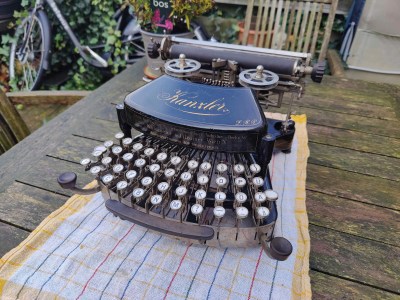
How did that work? Well, each key changed the position of the linkages, moving the slug either up or down. The top row articulates the deepest, while the home row doesn’t move at all. Makes sense.
The Kanzler was designed by Paul Gruetzmann, and the Kanzler model 1B shown here hit the market in 1903. With the Kanzler line, Gruetzmann was trying to produce a machine that was faster and more stable than others. The company claimed that 200 WPM was technically achievable. Can you imagine typing that fast on your best day, on your favorite keyboard? No chording allowed! :P
Finally, Some 3D-Printed keycaps for the Kinesis Advantage
If you’re a Kinesis Advantage owner, one of the first things you notice is that you might not really like the ABS keycaps and will probably want something different. But then you find out that although you can get fun keycap sets in ergo layouts, they’re never gonna be contoured like the factory set, and that’s something you’ll have to get used to that, in my opinion, degrades the Kinesis experience. Right now, it seems like the best option is to just print your own.
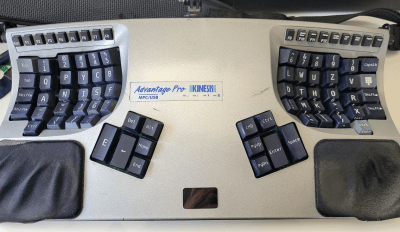
According to [SimplifyAndAddCoffee], these lovely keycaps were printed in Siraya Tech Blue Obsidian Black resin on an MSLA printer.
After printing, those inset legends were filled with white epoxy putty. [SimplifyAndAddCoffee] then scraped away the excess and completed the process by wiping them all with an isopropyl alcohol-soaked rag.
Personally, I suffer with the original ABS caps on my daily driver Kinesis, but my go-somewhere board has blank PBT caps for ultimate intrigue. I’d love to have a set of printed ones, but I’d have to have them made somewhere since I don’t have any type of resin printer around.
Got a hot tip that has like, anything to do with keyboards? Help me out by sending in a link or two. Don’t want all the Hackaday scribes to see it? Feel free to email me directly.

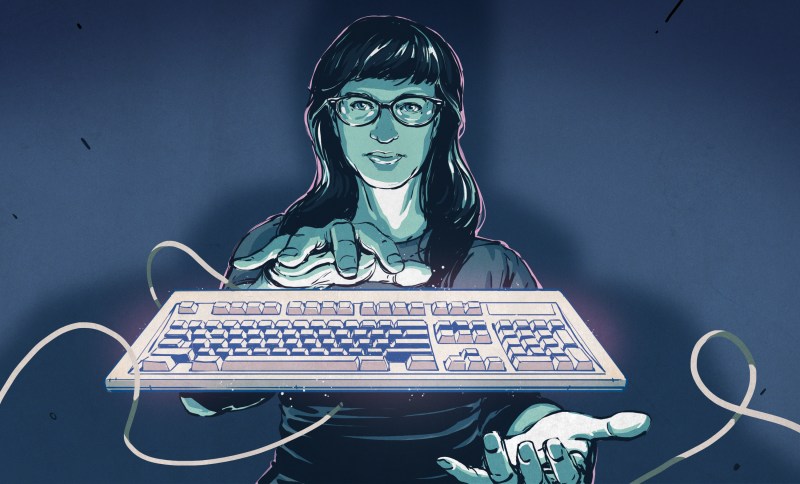










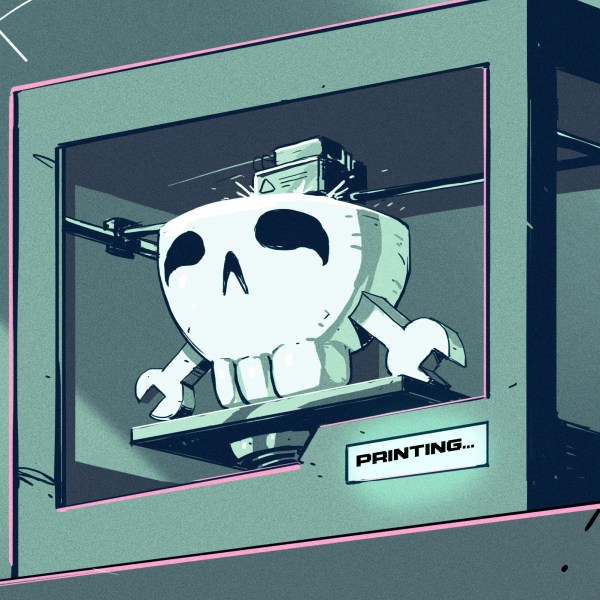



That cat keyboard reminds me of eXistenZ somehow, I don’t like it.
You just had to remind me that existed.
While Kanzler is the word for a male chancellor, in this context the definite article refers to (Schreib)maschine, which is a female word. So it’s die, not der.
Having used a similar design for years to adapt vintage Atari key caps to modern switches, I can confirm that the printed adapter method on top of Kailh Choc v1 switches works a charm…
Nice to see keys lined up even though they fan out rather than that broken zig zag of the Remington “standard”. Having the trackers overlap in line didn’t seem hurt here, that’s the only reason for the zig zag.
FWIW, Kinesis have made PBT keycaps available for purchase, with and without legends. Even can find them on Amazon.